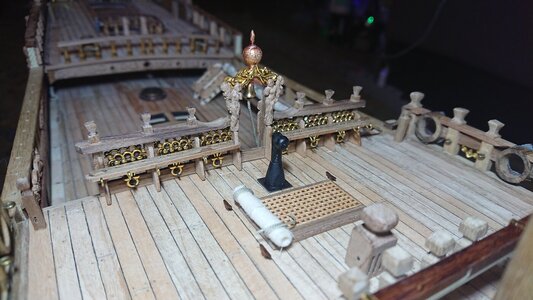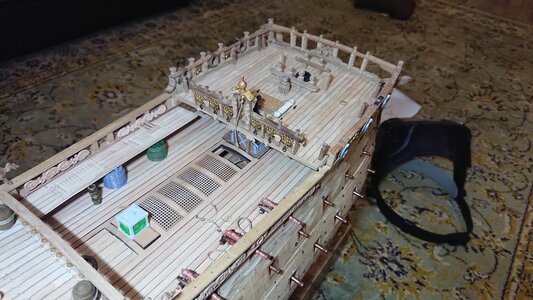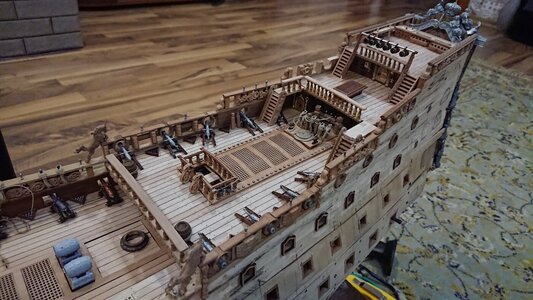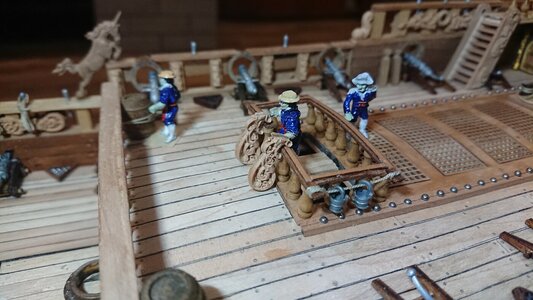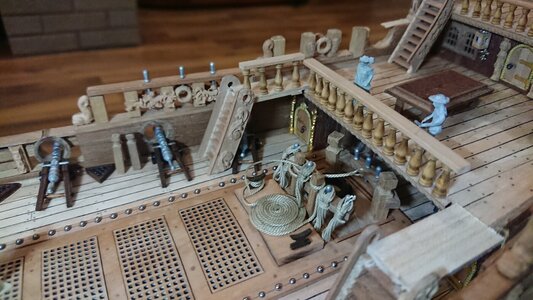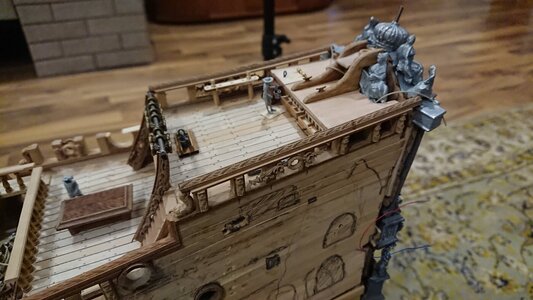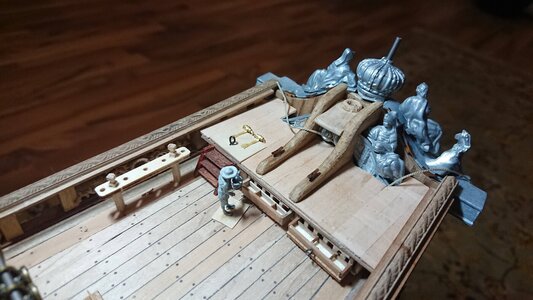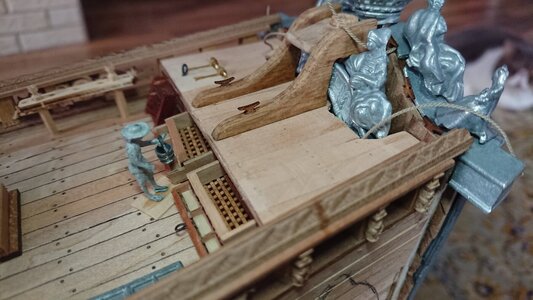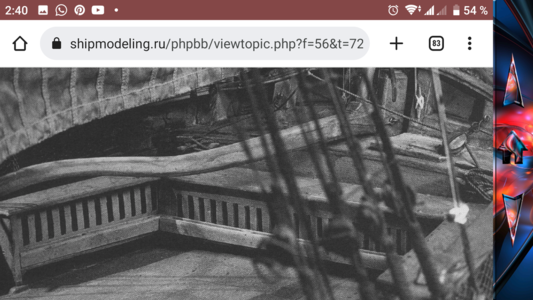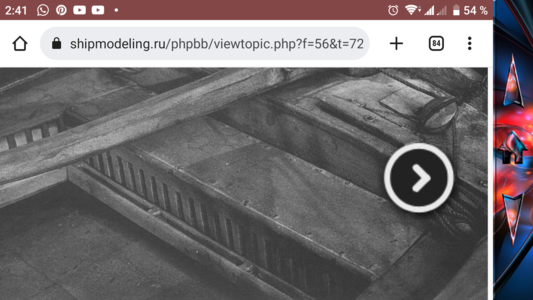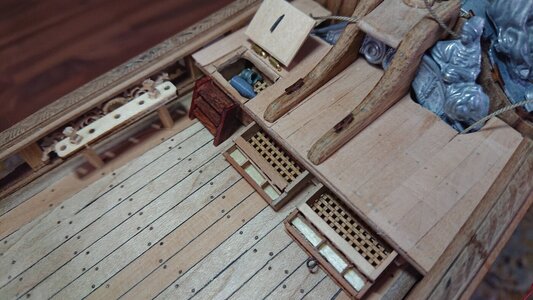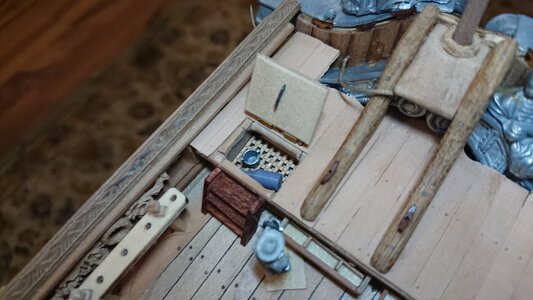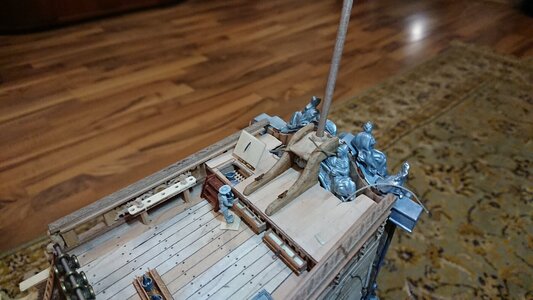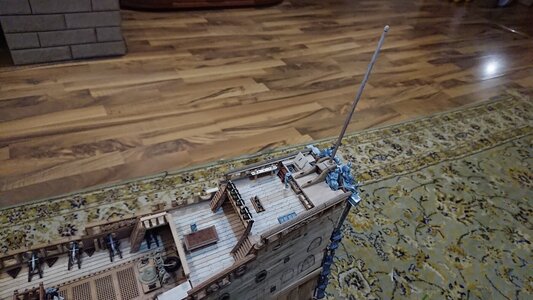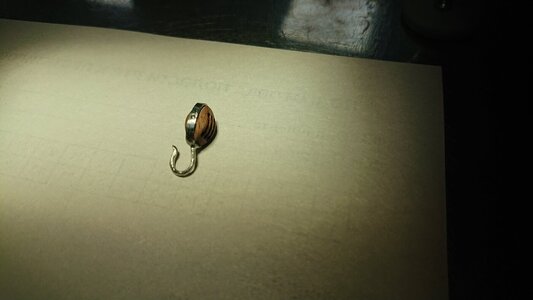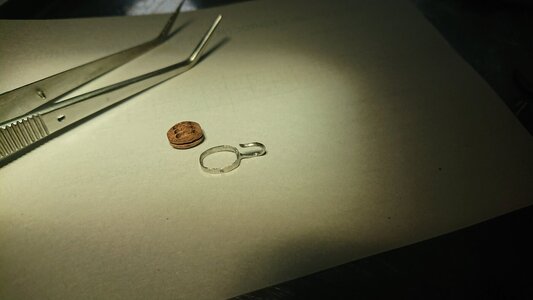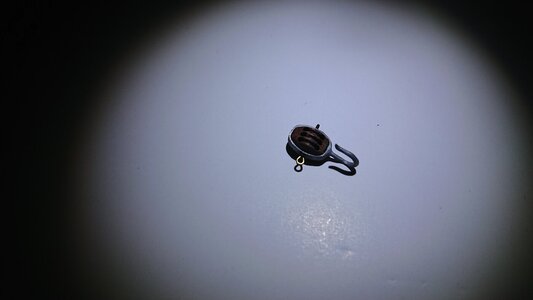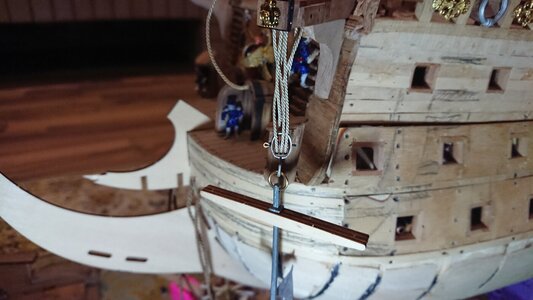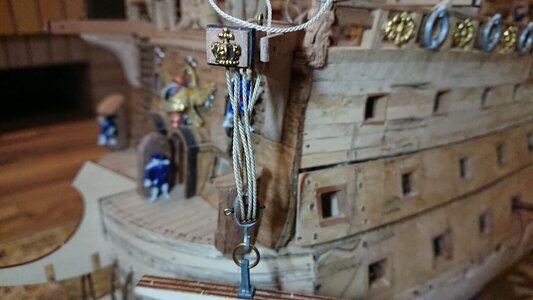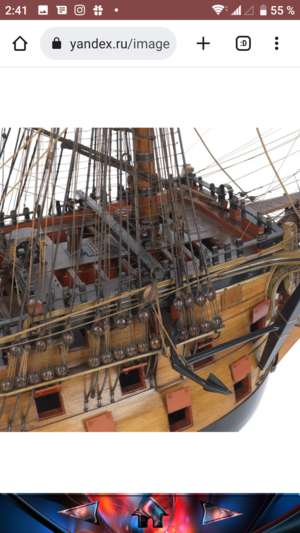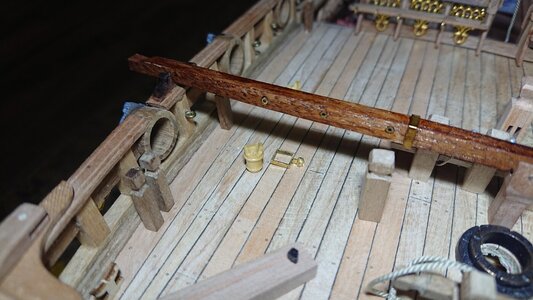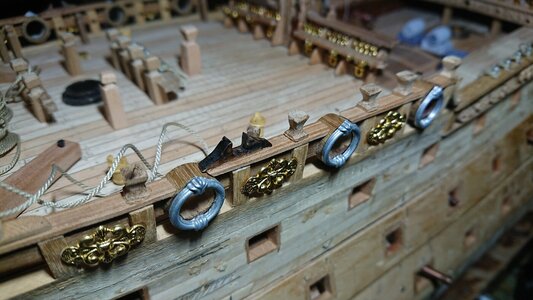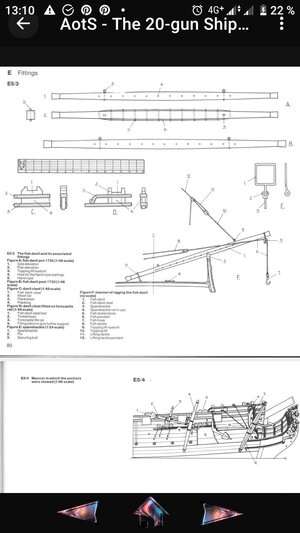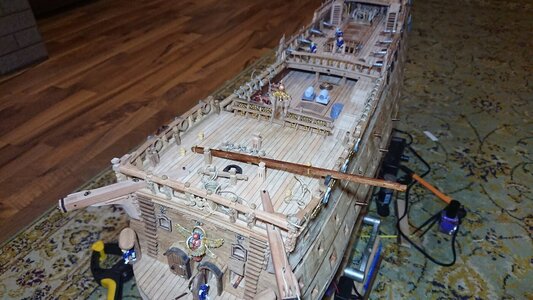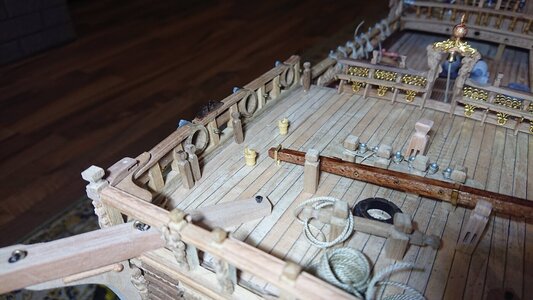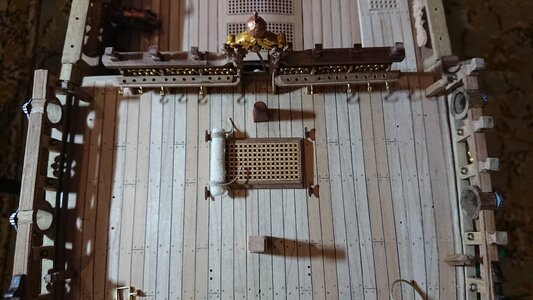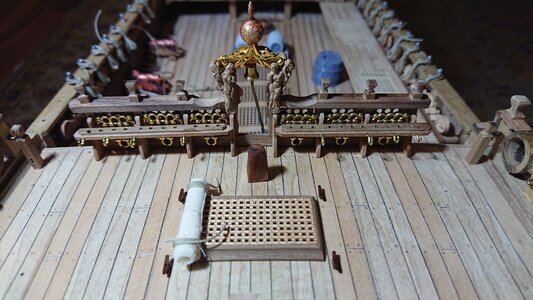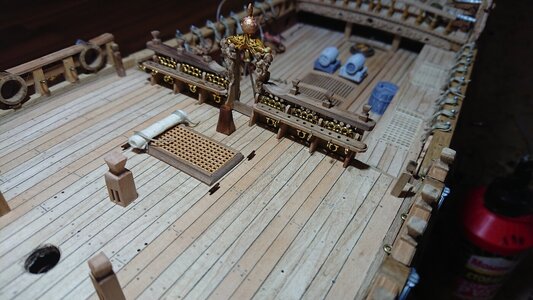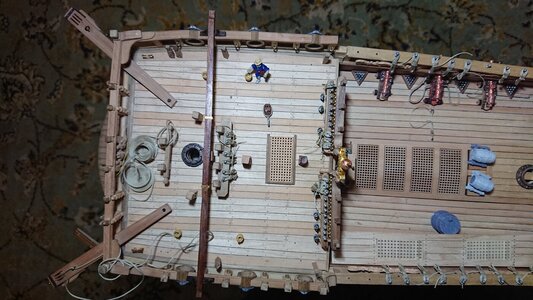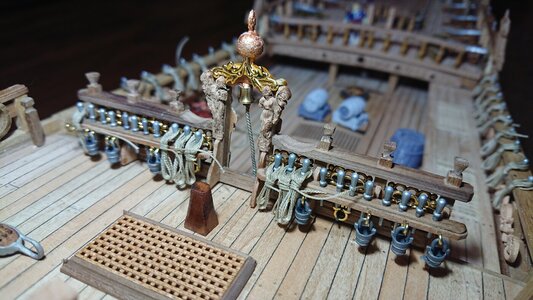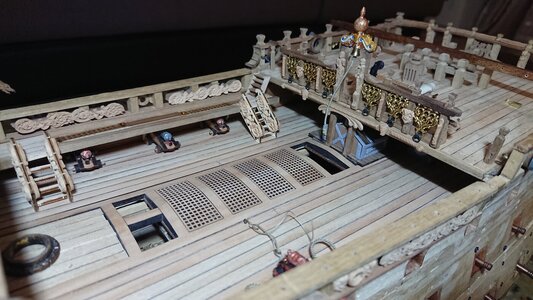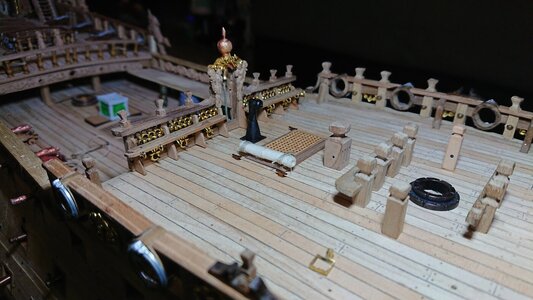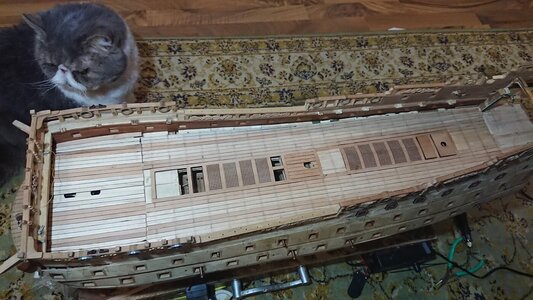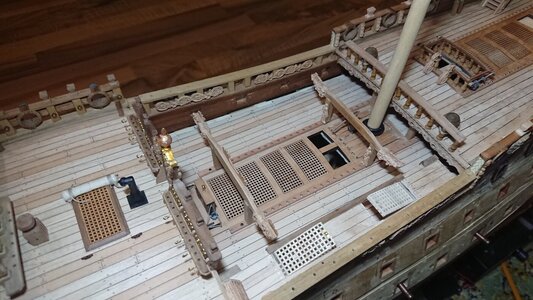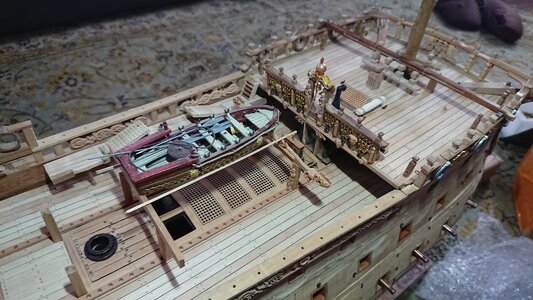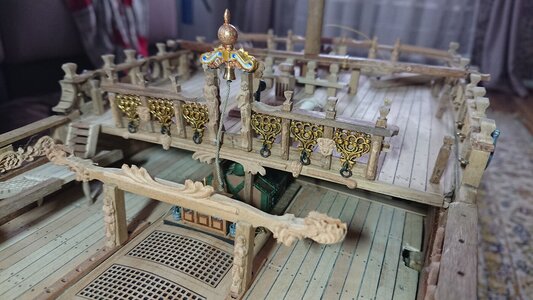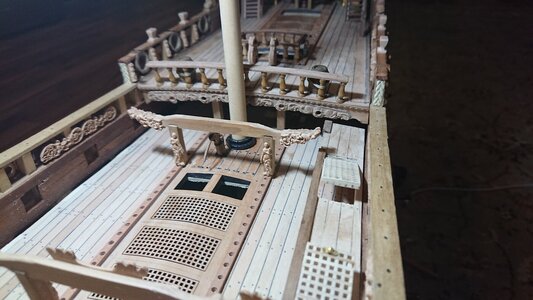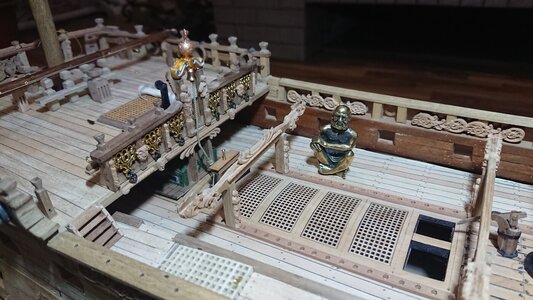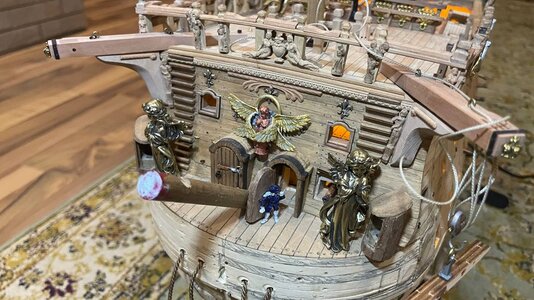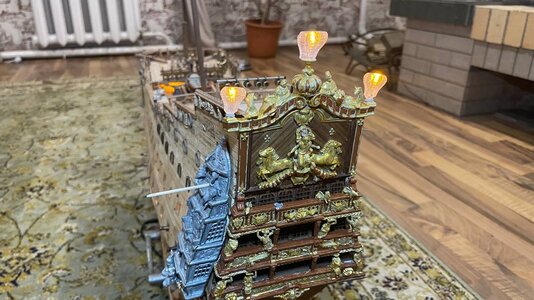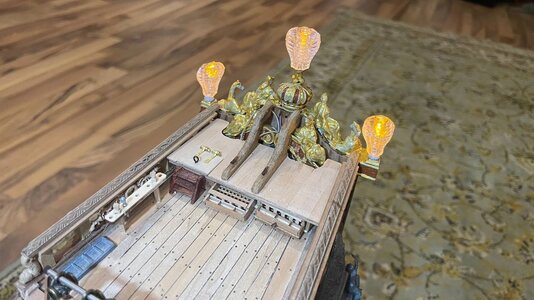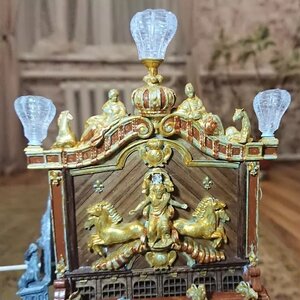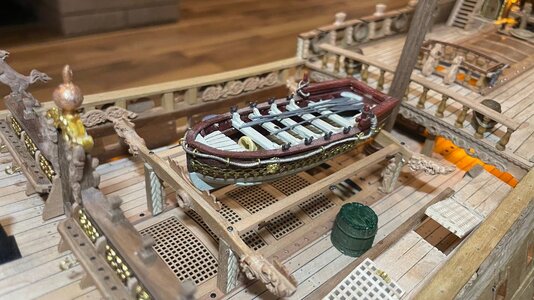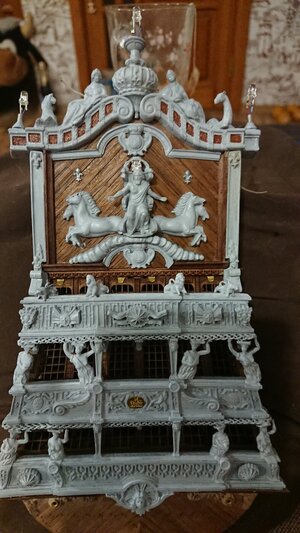The first superstructure from the bow of the ship is the fore-castel, also known as the Fordeck or forecastle. What elements and additions I made during the construction of the Soleil Royal ship from Deagostini on a scale of 1:78.
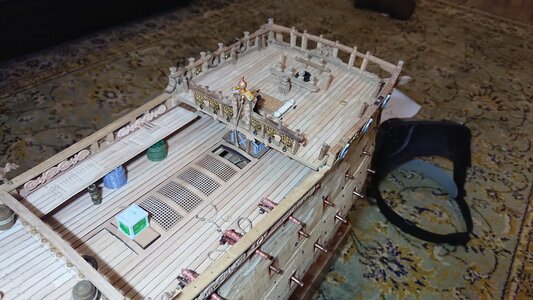
Front, side and rear releng or fif – reels-drift or bulwark. I made the heads of drift tom timbers and the heads of the regel head.
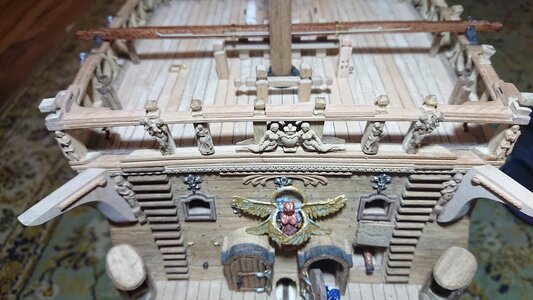
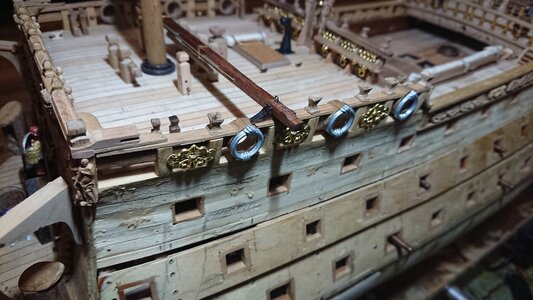
Between the head of the headboard of the headboard and the first side tom-timber, a pulley-gat is installed for the cat-beam hoist or for rustov.
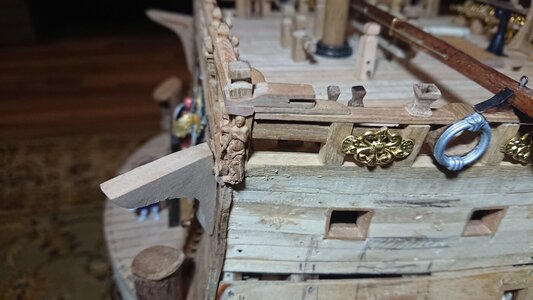
At the level of the second gun port, I made a pillow for the penter beam.
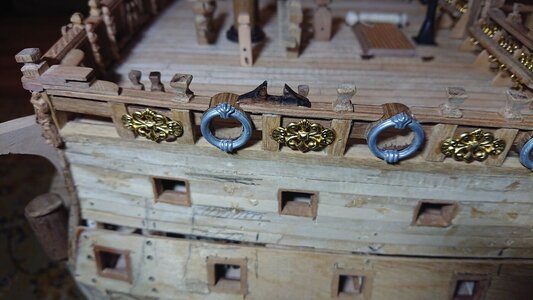
On the deck of the fort Castella, I highlighted the first and last beams. These beams had a sheet pile (quarter) for deck decking boards. That is, the deck flooring boards once did not cover the beams of the superstructures.
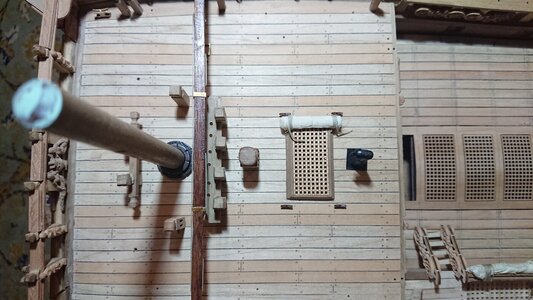
It was on the last beam of the tank that I installed the rear rail of the tank with a bell tower. The eight bitengs are grouped four on each side by horizontal lower and upper reels bars. They support the bitengs of the knits that are already on the deck flooring.
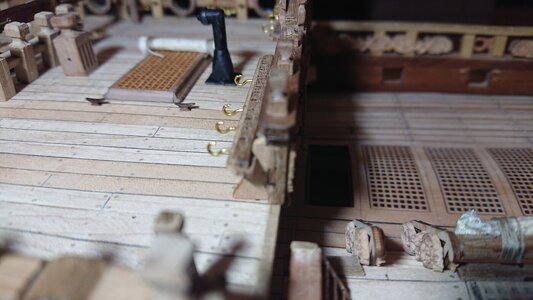
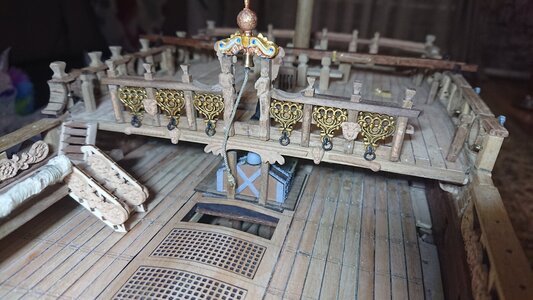
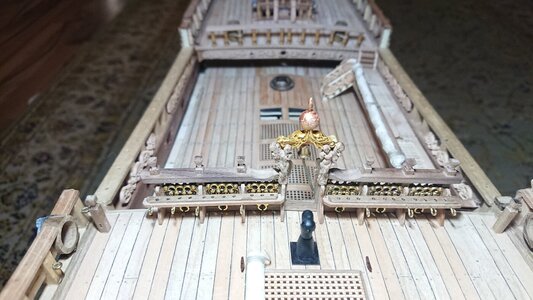
The deck flooring was made of wooden maple slats. Traditionally, belts were made of other types of wood, in particular oak, on French decks. I highlighted these belts with wooden strips made of pink pear. The dark belts of deck boards are carlings protruding at the level of the deck flooring – longitudinal power elements made of dense wood. The deck flooring was made of wooden maple slats. Traditionally, belts were made of other types of wood, in particular oak, on French decks. I highlighted these belts with wooden strips made of pink pear. The dark belts of deck boards are carlings protruding at the level of the deck flooring – longitudinal power elements made of dense wood. As a rule, eye bolts were installed in these belts.
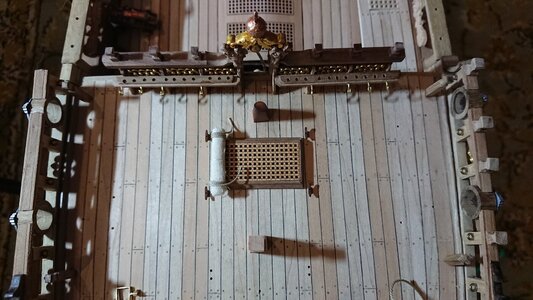
I installed a hook for the penter beam, there were two of them, one on each side. These lugs were mounted on frame bolts, they are movable and lay on the deck deck. The ring bolts were long, they passed through the beams of the operdeck, because the efforts on the penter beam were large.
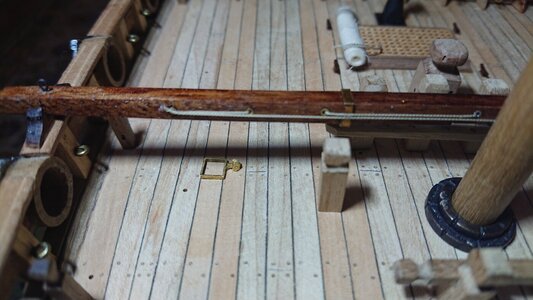
I installed a galley skylight with a roaster grille. I made hatch coamings without lodgements for cores. Ducks were installed on both sides of the hatch. During a storm, the hatch was covered with canvas, ducks helped to fix the tarpaulin on the grate.
